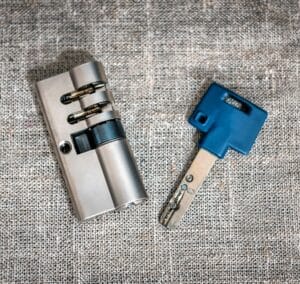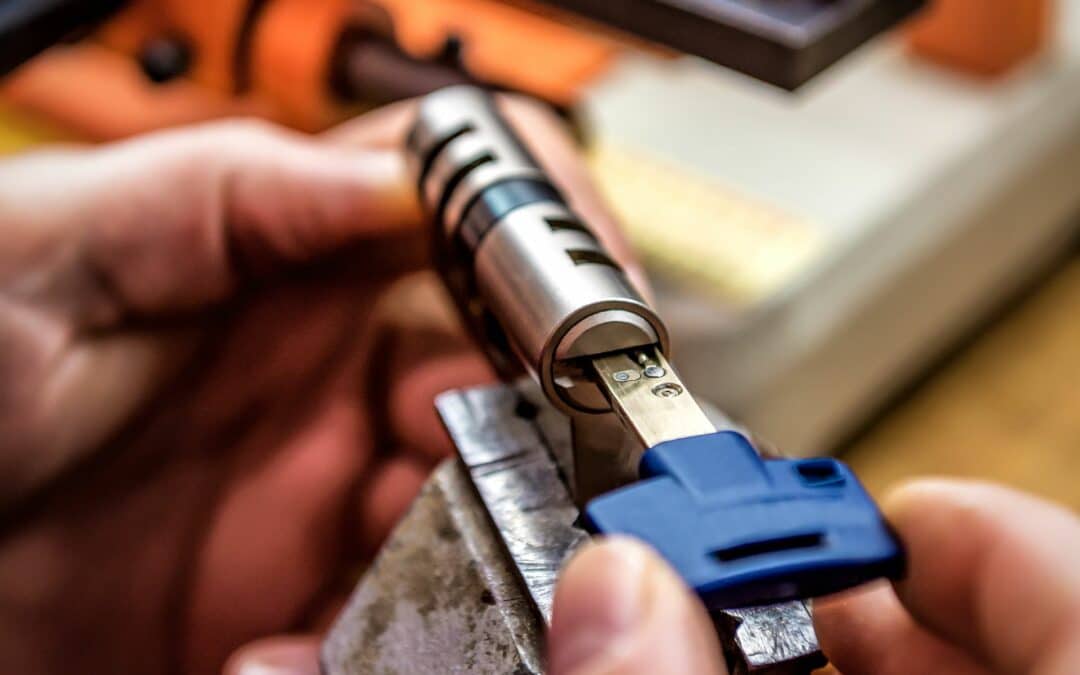Has your residential or commercial property recently been subjected to a break-in? Are you a landlord whose tenants are moving out? Did you recently have to let go of a disgruntled employee? Are you and your family moving to a new place? Have your keys been lost or stolen, or are your locks just worn out? If you answer “yes” to any of these questions, it might be time to learn how to rekey a lock. The question is: when and how to rekey a lock? Keep reading this blog to learn all about rekeying your door locks.
What Does It Mean To Rekey A Lock?
Let’s take a moment to clarify the difference between rekeying and changing locks. While rekeying locks involves only changing the lock cylinder, changing them means replacing the whole mechanism. You can learn more about the differences between these two practices here.
When To Rekey A Lock
You probably have a good idea of when to rekey a lock based on the questions at the blog’s beginning. However, for the sake of clarity, let’s examine situations when it’s necessary to rekey a lock for any of your doors.
1. Lost Or Stolen Keys
If your keys are lost or stolen, first take time to retrace your steps and see if they are retrievable. Reach out to a locksmith to have your locks rekeyed if the keys in question are still unable to be located.
2. Recent Intrusion
If a stranger was able to break into your home successfully, anyone might be able to do the same. To keep you and your loved ones safe, reach out to your local locksmith to have the locks rekeyed as soon as possible if you don’t already know how to rekey a lock yourself.
3. Old Lock Cylinders
Sometimes the passage of time can be the biggest culprit behind something no longer working in prime condition. If the lock cylinders are considerably old, you’ll probably need to replace them so your locks can remain effective.
4. Business-Related Reasons
If you run a business or let places to renters, you might encounter situations where you’ll need to know how to rekey a lock, such as a tenant moving out or an employee being dismissed. Rekeying services are available for both residential and commercial purposes.
How To Rekey A Lock
After reviewing four of the many reasons to get locks rekeyed, you are ready to learn how to rekey a lock. These steps are applicable for doors at both residential and commercial properties. Ensure that you have a rekeying kit with you as well as the original key. Without the rekeying kit, you won’t be able to complete this task successfully.

1. Remove The Knob
The very first step in how to rekey a lock is to remove the door knob. Doing this will require using the key to align the holes in the cylinder, which usually involves turning the knob to the right. After aligning the holes, you’ll take a remover tool from the rekeying kit and insert that into the keyhole to pop off the knob.
2. Remove The Lock Cylinder
Once the knob is removed, you’ll use the old key to help you turn out and remove the lock cylinder. You’ll typically push the cylinder out from the front of the knob so it goes out the back. After removing the old cylinder, you’ll be ready to keep working.
3. Remove The Retainer Ring Or C-Clip
Another part you’ll need to remove is known as the retainer ring, or C-clip, due to its C-shape. This part is attached to the cylinder and is used to keep it in place. Using a retainer ring removal tool provided in your rekeying kit, you’ll carefully take the retainer ring or C-clip off the lock cylinder.
4. Remove The Cylinder Plug
After removing the retainer ring or C-clip, you’ll need to remove the cylinder plug. First, you’ll turn the old key left or right in the cylinder to get it ready for removal. Then, push the plug out of the cylinder using the plug follower in your rekeying kit. Be careful that the springs and pins don’t fall out during this step, as you’ll need them for the main part of the rekeying process.
5. Dump The Old Pins And Insert The New Ones
Now that the cylinder plug is out, carefully remove the old pins using tweezers. Once they’re all out, start inserting new pins with small pliers or tweezers. Upon inserting a new key, you’ll gently add new pins to the cylinder plug.
6. Reassemble The Lock
After inserting the new pins and key, start reassembling your door lock. All you need to do is follow the instructions backward, starting by reinserting the cylinder plug, then the retainer ring, and so on.
The Best Locksmiths In Tallahassee Can Rekey Any Lock!
We hope this blog has boosted your confidence in knowing when and how to rekey a lock. Of course, we understand if you would rather leave this task in the hands of a professional locksmith. Luckily, if you live in Tallahassee, Florida, all you need to do is contact us at ASAP Locksmith. Our team will be ready and able to rekey your locks and secure your workplace or home.

